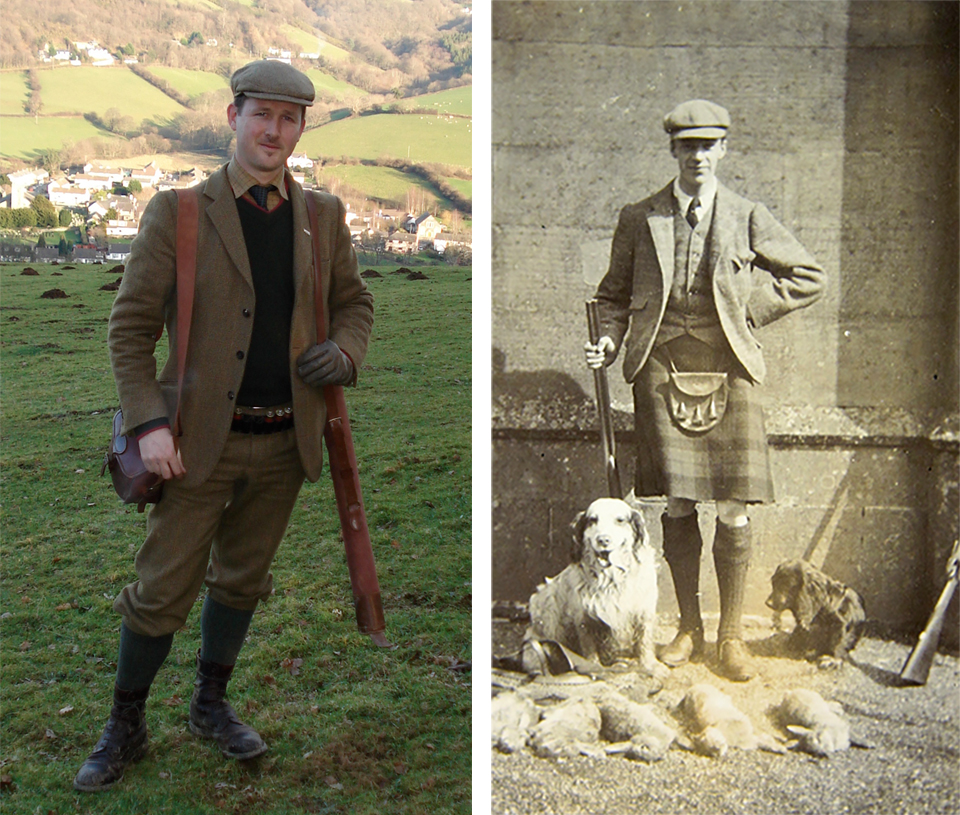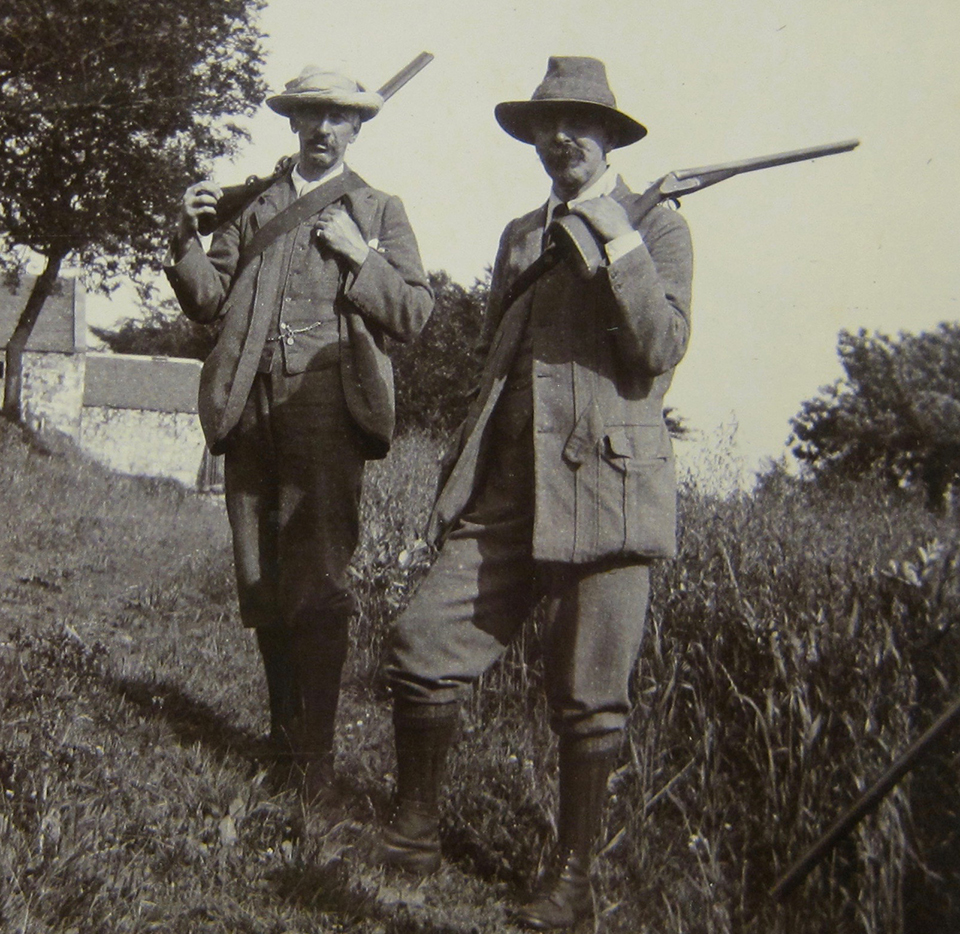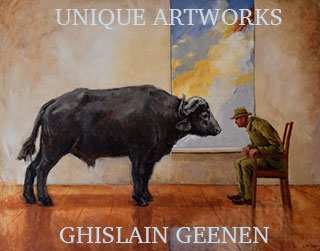Were I to close my eyes and imagine the modern shooting line on a typical driven pheasant day in England, the Guns will mostly be clad in a Schoffel fleece gillet, a lamb’s wool jumper, a bright tie, depicting some kind of game bird or dog motif, a pair of breeks of either moleskin or tweed, a pair of Le Chameau wellies and a flat cap of some kind.
For wet weather, I expect the addition of a ‘covert coat’, in either a lightweight, shower-proof, fabric or a modern ‘technical tweed’ would generally be the order of the day.
However, for some, the theatre of a day’s driven shooting benefits from donning the correct attire which, over a century, developed into a recognisable form, along with the guns that developed alongside it.
Damp tweed will keep you snug and quickly dries-off when the rain stops and the wind blows

If you shoot your birds with a nineteenth century English side-lock, chances are you will appreciate the traditional look, feel and performance of a tweed shooting suit.
The shooting suit we now recognise as standard attire was developed in the mid, to-late nineteenth century. Previously, men hunted in clothing very similar to that which they wore for nor-mal daily activities. Frock coats, top hats, breeches, long socks and garters.
Clearly, some materials are better suited to long periods outdoors in all weathers than others. Different countries worked out vari-ous permutations and preferences. It was generally found that fabrics like loden, moleskin, wool, leather and felt provided the best protection and warmth, while being hard-wearing.
By the last quarter of the nineteenth century, we can see the style of the shooting man begin to settle on the combination of jacket, waistcoat, breeks, socks and boots that we still encounter on up-market shoots today. Think Edward Fox in the film ‘The Shooting Party’ and you have the classic incarnation of the style. Set in 1914, it reflects the pinnacle of shooting suit development and remains virtually unchanged to this day. Just go to Cordings in London and see how close their current shooting suit fits the mould.
If it is so obvious what the shooting suit is, why bother writing about it? I hear you ask. Well, like everything, it is hard to get it right. Everyone tries their ideas and some work. Some don’t.

The downside to turning up in a brand new shooting suit is that you may end up looking like a Russian gangster’s son trying to fit in
The Fabric
The best fabric is tweed. It looks good even when it gets wet and then dries on you, time and time again. It retains its shape, you can brush dried mud off it. It keeps you warm when it is cold outside and breathes enough to keep you cool when it warms up. When the threads get wet, they expand and form a barrier to the entry of more water. The damp tweed will keep you snug and quickly dries-off when the rain stops and the wind blows.
Weight will depend on your hunting terrain and temperature, tweeds come in a huge variety of weights and textures. If you plan merely to stand on a peg and pull the trigger between drinks, on an October partridge day, then a fine, lighter-weight will do nicely. If you are going up the hill for a stag or beating out every other drive, a heavier, coarser tweed will be better.
More than being extremely practical, tweed is a national treasure; a true craft industry that we need to support if we are to keep it. Harris Tweed even has a special legal status and protection from imitation.
The Fit
Fit is personal. I like sufficient space and movement across my back to swing my shoulders freely when shooting but I don’t want loose folds of heavy fabric getting in the way. This is one reason I prefer a traditional shooting jacket to a covert coat.
There must be sufficient room in the jacket to put on a thin sweater and/or waistcoat in colder weather, but it should hang correctly and fit well enough to look smart in the hotel bar, serving as a semi-formal jacket. Tailoring is the key. An action-back is, in my view, essential if the suit is to be used for shooting.
Arms must be cut sufficiently generously from elbow to armpit to allow for a light sweater and taper to cuff, so there is no unnecessary material flapping around your wrists and hands.
A three-button style allows for the front to be buttoned to a point mid-chest, from where the lapels rise to the neck-line without leaving a large open pane to the front, for rain and wind to enter, or get in the way of the butt, when a gun is mounted in the shoulder pocket. If there is a breast pocket, it should only be on the opposite shoulder to your gun mount.
I also like a storm lapel, with a tab for buttoning to the neck, should a particularly horrible squall blow-in during a drive.
The colour
Specialist suit maker In-Tweed lists 3,000 tweeds from which customers can choose. Many tweeds have their roots in Scottish estates, with the blends of colours carefully matching those of the rocks, plants and soils of the hills and moors. Even strikingly bold tweeds, in their correct environment, actually serve as very effective camouflage.
For shooting, colour is a personal one. Browns and greens in all shades are popular for obvious reasons. Anything too dark or too light may act to push a bird away from you.
Mixing materials
The downside to turning up in a brand new shooting suit is that you may end up looking like a Russian gangster’s son trying to fit in, or a hedge fund manager on his one (free) day a year in the field. With everything immaculate, everything matching and all new kit, the effect may be more ‘all the gear, no idea’ than the in-tended formal elegance. One never wants to look like one is trying too hard.
As your kit gets worn in, you will inevitably find you have torn the crotch out of a pair of breeks, lost a hat or worn-out the lining of your jacket. You will end-up with a wardrobe full of survi-vors, of varying colours and styles.
Mix them up, it is fine. It really doesn’t matter if your hat, coat, breeks and waistcoat are all different tweeds of random vintage, in fact, it shows a rather classy, relaxed approach to your shoot-ing. Good quality, well-worn tweeds will never go out of style in the shooting line.
Length of breeks
Th modern fashion is for very little, if any, overhang of material over the knee. Traditionally it had a purpose. The overhang ensured rain dripped off the material, rather than down your socks and into your boots. It also provides for ease of movement when climbing fences or hills.
Personally, I find a two-inch overhang (plus twos) ideal for my shooting breeks, though in Scotland, plus-fours are the preferred length of the ghillies and garron pony men who work on the hill professionally.
The breeks should be secured with a buckle below the knee. Some find velcro works well, but be wary of elasticated straps, as the elastic will wear out long before the suit does. At the waist, you need proper belt loops. The last thing you need is heavy, wet material sagging ever downwards as the day wears on!
Waistcoat or not?
I like a waistcoat. With a silk back, it allows for front warmth and protection from the elements, while allowing for free movement. The other benefit is that it should have four pockets, providing neat storage for ear plugs, cigar cutter, lighter and pocket knife.
Whatever you choose, buy quality and it will age gracefully with you. Old shooting suits never die. I have a tweed shooting jacket from Daks, dating from the 1950s, and a friend shoots in one made for Sir David Nickerson in Saville Row around the same time.
Whatever you choose, buy quality and it will age gracefully with you. Old shooting suits never die.
Published by Vintage Guns Ltd on



